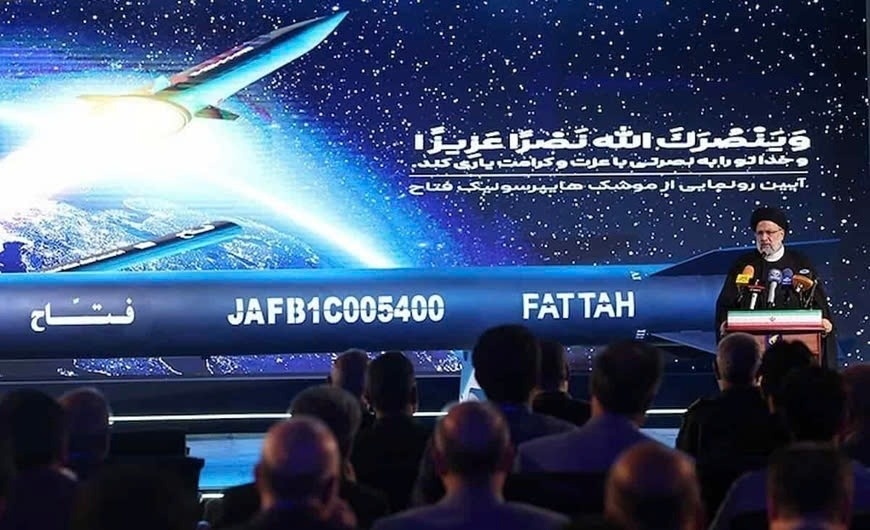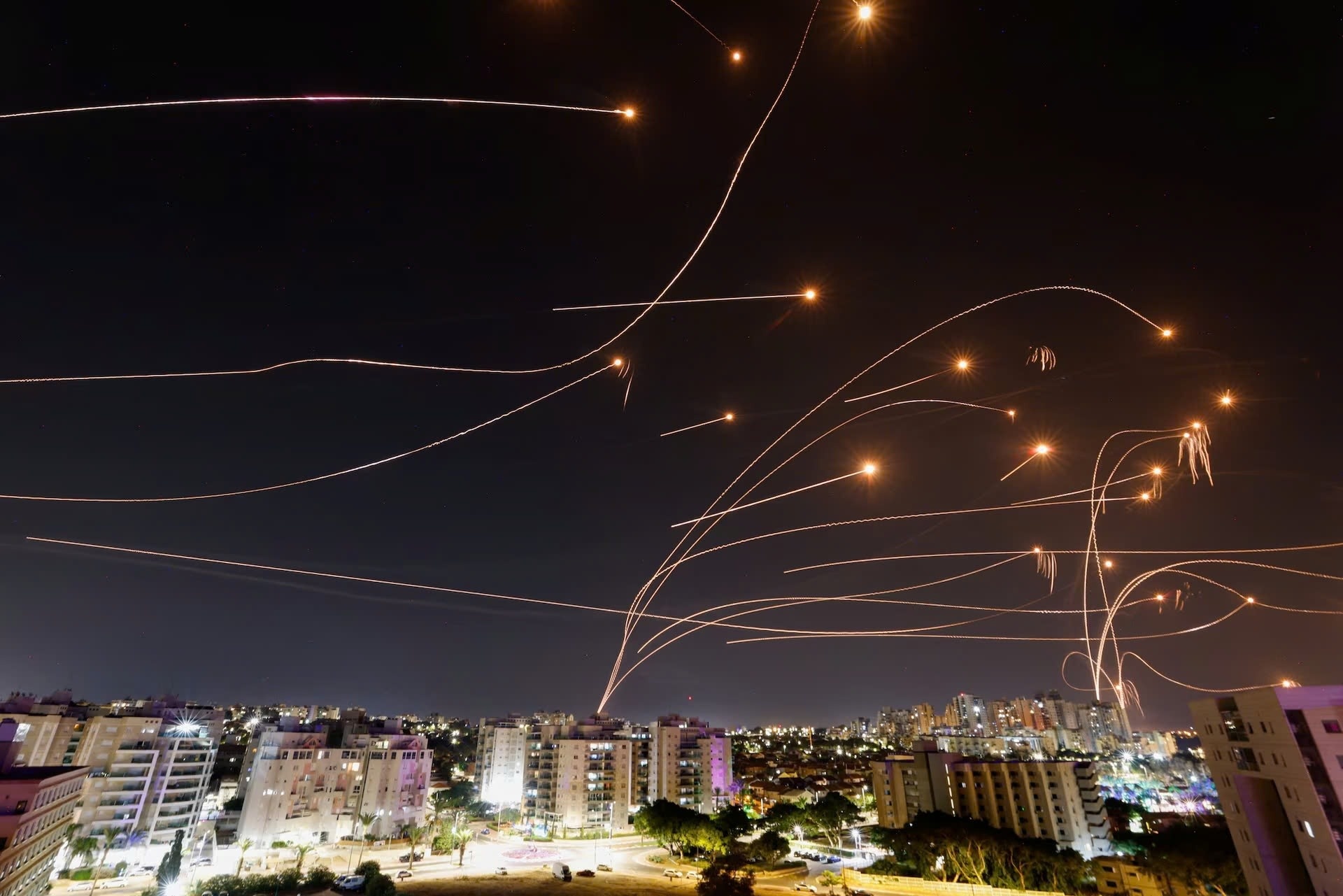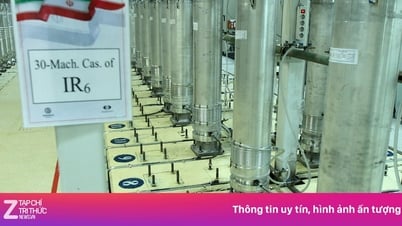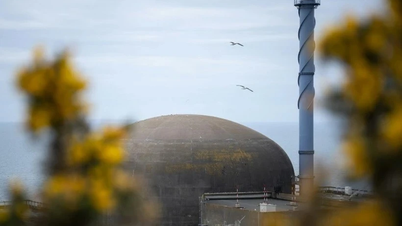
On June 18 alone, Iran launched more than 400 missiles, including the alleged supersonic Haj Qassem and Fattah-1 missiles, along with hundreds of suicide UAVs towards major cities in Israel.
Among these, the appearance of the Fattah-1 is considered to be a game-changer. Not only is it a symbol of Iran's military power, this weapon is also a serious challenge to Israel's advanced missile defense systems, which were once considered invulnerable.
Change trajectory during flight
The Fattah-1, unveiled in 2023, is Iran's first hypersonic missile and was named by the country's supreme leader at the time, Ayatollah Ali Khamenei.
The Fattah-1 is 12 m long and has a range of up to 1,400 m, runs on solid fuel using a single-stage propulsion system and can carry 200 kg of explosives.
This medium-range missile is equipped with a hypersonic glide vehicle (HGV) warhead designed to avoid enemy defenses and can travel at speeds of up to 17,900 km/h.
According to Iranian sources, the Fattah-1 is capable of traveling at Mach 5 — five times the speed of sound. More specifically, Fabian Hinz, a researcher at the International Institute for Strategic Studies, described the Fattah-1 as having a warhead mounted on a “steerable reentry vehicle,” which allows the missile to change direction briefly during descent to avoid interception.
 |
IRGC unveils Fattah hypersonic missile in 2023. Photo: USA Today. |
These features are designed to help the missile evade interception by defense systems like Israel's Iron Dome and Arrow. Iranian officials have called the missile an "Israeli attacker," and a banner displayed at the launch in Tehran read "400 seconds to Tel Aviv" in Hebrew as a show of force.
Additionally, hypersonic weapons are notoriously difficult to detect and intercept. Unlike traditional ballistic missiles, which follow predictable trajectories, hypersonic glide vehicles can change course mid-flight, leaving defense systems with very limited reaction time.
The broader implications of using the Fattah-1 are significant. If the Fattah-1 proves operationally reliable, it could force Israel to reassess the effectiveness of its missile shield.
“It's not just a fast missile, but a maneuverable vehicle, which makes it much more effective at evading interception than a conventional ballistic missile,” Hinz said.
Escalating tensions and the problem of firepower attrition
Iran's use of the Fattah-1 in its conflict with Israel marks a serious escalation. Not only is it a symbol of Tehran's military technological development, the Fattah-1 also sends a strong deterrent message to both the US and its allies in the region.
 |
Tehran residents celebrate Iran's attack on Israel on the night of October 1. Photo: New York Times. |
If its ability to penetrate defenses is confirmed, this could change Israel's defense posture strategy and force the US to adjust its deployment of THAAD or Aegis Ashore systems in the region.
On the Israeli side, officials confirmed that the defense systems successfully intercepted most of the attacks, but did not deny that some missiles had gotten through the shield.
To date, Israel is deploying five missile interception systems including Iron Dome, David's Sling, Arrow, THAAD and Iron Beam.
These multi-billion dollar systems have been deployed and proven numerous times since Hamas' attack on the country in October 2023.
The biggest problem, however, is that these five systems are expensive and difficult to produce. According to Al-Rai Daily, an Iron Dome interceptor missile costs about $50,000 , while David's Sling and Arrow 3 missiles cost between $1 million and $4 million .
The US estimates Iran has about 3,000 ballistic missiles. However, that figure was calculated two and a half years ago and the number may have increased. Tehran will want to retain most of its missile arsenal in case of an escalation of the conflict with Israel.
Launching multiple ballistic missiles in a matter of minutes could also be an attempt to overwhelm or exhaust Israel's defenses. Interceptors are sophisticated, expensive, and have uncertain supplies.
 |
Israel's famous Iron Dome system still let some missiles and drones escape from Iran's fierce airstrikes. Photo: Reuters. |
In contrast, Iranian missiles like the Fateh-110 and Zolfaghar cost between $110,000 and $150,000 . This cost difference clearly favors Iran. An Iranian attack could cost less than $1 million , while Israel could spend five to 10 times that amount on defense.
More specifically, in April, the former financial adviser to the IDF chief of staff said that an Arrow missile typically costs $3.5 million and the David's Sling system's interceptors cost $1 million .
Removing 100 or more of these missiles would cost Israel hundreds of millions of dollars, while Iranian missiles cost at least $100,000 .
In a protracted war of attrition, Tehran could well maintain the pressure, while Tel Aviv gradually depletes its expensive defense stockpiles.
“This is a war of attrition and the question is how many missiles Iran has left, and how many interceptors Israel has left to defend against,” explained Alex Gatopoulos, Al Jazeera ’s military editor.
Source: https://znews.vn/con-ac-mong-voi-cong-nghe-danh-chan-cua-israel-post1562386.html







![[Photo] General Secretary To Lam chairs the 14th Central Military Commission Conference](https://vphoto.vietnam.vn/thumb/1200x675/vietnam/resource/IMAGE/2025/6/20/a9d25fc6dd664fb9a3757502f32e5db0)














































![[Maritime News] Wan Hai Lines invests $150 million to buy 48,000 containers](https://vphoto.vietnam.vn/thumb/402x226/vietnam/resource/IMAGE/2025/6/20/c945a62aff624b4bb5c25e67e9bcc1cb)











































Comment (0)